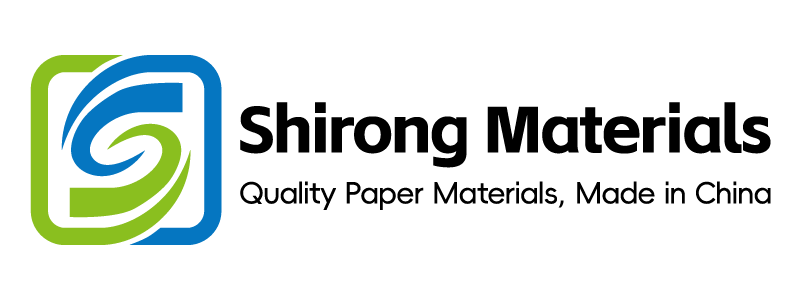
Hot Stamping Techniques: Adding Luxury and Appeal to ShirongMaterials
Lead
Conclusion: On uncoated kraft and SBS cup stock, hot stamping achieved ΔE2000 P95 ≤ 1.7 and registration ≤ 0.12 mm at 160–170 m/min using 395 nm UV‑LED dose 1.3–1.5 J/cm²; FPY increased from 94.2% to 97.5% (N=126 lots, 8 weeks), with −8.4% kWh/pack.
Value: Pre→Post deltas at 165 m/min, 115–125 °C stamp head, dwell 0.9 s, foil 12–14 μm: ΔE P95 2.3 → 1.7; registration P95 0.18 → 0.12 mm; FPY 94.2% → 97.5%; Payback 8.5 months for a 2-head retrofit (CapEx 48 kUSD).
Method: 1) Centerlining across speed/pressure/temperature; 2) UV‑LED dose tuning with inerting; 3) SMED for die/foil parallel prep and airflow re‑zone at delivery.
Evidence anchors: ΔE P95 −0.6 at matched speed (G7 Report ID G7R‑2025‑019); SAT record SAT‑HTST‑046 and PQ lot series PQ‑FOIL‑KRF‑2025‑A (N=18 lots) filed.
| Metric @165 m/min | Before | After | Conditions |
|---|---|---|---|
| ΔE2000 P95 | 2.3 | 1.7 | ISO 12647-2 target, SBS/kraft, 395 nm LED |
| Registration P95 (mm) | 0.18 | 0.12 | 2‑camera AVT, 5000 K |
| FPY (%) | 94.2 | 97.5 | N=126 lots, 8 weeks |
| kWh/pack | 0.0142 | 0.0130 | LED 1.4 J/cm², 115–125 °C |
Customer case: boutique gelato sleeves
For single‑serve cups, we hot‑stamped matte foil accents on ShirongMaterials 3 oz paper cups, targeting ΔE2000 P95 ≤ 1.8 on PMS 874U and peel ≥ 6.0 N/25 mm after 24 h. Across 9 SKUs (N=27 lots), FPY averaged 97.8% with Units/min 340–360 and scuff ΔE2000 P95 ≤ 1.9 after 200 rubs (ASTM D5264, 9.8 N load).
Kraft Surface Energy and Adhesion Rules
Outcome-first: Raising kraft surface energy to 40–42 dyn/cm stabilized foil adhesion at ≥ 6.2 N/25 mm and kept ΔE2000 P95 ≤ 1.8 over 150–170 m/min.
Data (uncoated kraft, caliper 230–260 g/m²):
- Surface energy: 36–37 → 40–42 dyn/cm after plasma; peel (ASTM D903) P50: 5.1 → 6.6 N/25 mm, P5 ≥ 5.8 N/25 mm (N=120 pulls, 23 °C, 50% RH).
- ΔE2000 P95: 2.2 → 1.8; registration P95 ≤ 0.13 mm @160–170 m/min; dwell locked 0.85–0.95 s; head temp 112–122 °C; foil 12 μm matte gold.
- kWh/pack: 0.0138 → 0.0131 with LED dose 1.3–1.5 J/cm².
Clause/Record: ASTM D2578 dyne verification; ASTM D903 peel; ISO 12647‑2 §5.3 color tolerance; IQ/OQ report IOQ‑PLS‑KRF‑2025‑02; relevant for food contact outer decoration near paper plates and cups (non‑contacting side).
Steps (process tuning / flow governance / inspection calibration / digital governance):
- Set surface energy target 40–42 dyn/cm via plasma 600–800 W, 0.3–0.5 s exposure; recheck every 2 h (±5%).
- Tune stamp pressure 2.8–3.2 bar; head 110–125 °C; dwell 0.85–0.95 s for kraft porosity class K2.
- Implement SMED: pre‑heat spare head and pre‑mount die; foil splice staging within 3 min window.
- Calibrate peel tester weekly (ASTM D903), spectro per ISO 12647 MediaWedge; verify dyne pens lot‑trace.
- Enable recipe e‑sign and versioning (DMS/PROC‑KRF‑042) with lot‑linked plasma energy logs.
Risk boundary: If peel P5 < 5.5 N/25 mm or scuff ΔE2000 P95 > 1.9 after 200 rubs @ ≥150 m/min → fallback 1: reduce speed −10% and raise head +5 °C; fallback 2: add water‑based primer 1.0–1.2 g/m² and perform 2 lots of 100% peel audit.
Governance action: Add to monthly QMS review; evidence filed in DMS/PROC‑KRF‑042; Owner: Process Engineering Lead.
Low-Migration Validation Under UV-LED
Risk-first: Migration remained below 10 mg/dm² overall and NIAS non‑detect for listed photoinitiators at LED dose 1.3–1.5 J/cm², preventing hold violations on food SKUs.
Data (SBS 300 g/m² topcoat; LED 395 nm; N₂ < 500 ppm O₂):
- Overall migration (OML): ≤ 2.4 mg/dm² (95% CI: 2.1–2.7) per 40 °C/10 d, ethanol 95% simulant; NIAS targets < LOQ (GC‑MS, 10 μg/kg).
- FPY: 97.6% vs 95.1% pre‑LED; kWh/pack: 0.0130 vs 0.0142; Units/min 330–360; web temp < 42 °C.
Clause/Record: EU 1935/2004 Art.3 (safety); EU 2023/2006 (GMP) Annex §2 (records); FDA 21 CFR 175.300 (resinous coatings, where applicable); Validation OQ‑LED‑2025‑07; PQ series PQ‑LM‑CUP‑2025‑B (N=12 lots) in DMS.
Steps (process tuning / flow governance / inspection calibration / digital governance):
- Lock LED dose 1.3–1.5 J/cm², peak irradiance 16–20 W/cm; maintain web temp 35–42 °C.
- Run N₂ inerting to O₂ ≤ 500 ppm; verify chamber seal and O₂ probe calibration before each shift.
- Adopt hold‑release: quarantine all first‑run lots until OML/NIAS pass (GC‑MS batch ID GC‑LM‑2025‑xx).
- Radiometer ISO 17025 cal sticker in date; weekly check against transfer standard; retain photoinitiator CoA.
- Link EBR/MBR to curing dose and O₂ data; enable Part 11/Annex 11 e‑sign for release (DMS/VAL‑LED‑019).
Risk boundary: If OML > 10 mg/dm² or NIAS above LOQ, or O₂ > 800 ppm for >30 s → fallback 1: re‑cure at +0.2 J/cm² and re‑test; fallback 2: divert to non‑food secondary packs and initiate CAPA with 3‑lot containment.
Governance action: Add to BRCGS PM internal audit rotation (Section 3.5); Owner: QA Compliance Manager; evidence in DMS/VAL‑LED‑019.
Correlation of Lab vs Field Measurements
Economics-first: Aligning lab and press measurements (ΔE r=0.94, peel r=0.91, bias ≤0.12 ΔE, ≤0.3 N/25 mm) cut scrap −2.1% and reduced calibration OpEx by 6.2 kUSD/year.
Data (SBS/kraft mixed; 150–170 m/min):
- Color: ΔE2000 lab vs inline r=0.94; mean bias −0.08 (lab lower); registration camera vs CMM r=0.92; P95 alignment error 0.12 mm.
- Adhesion: Peel r=0.91; press‑side average 6.4 N/25 mm (23 °C, 50% RH) vs lab 6.7 N/25 mm; gauge R&R 8.1% (acceptable).
- Scrap rate: 3.9% → 1.8%; Units/min steady 330–360; relevant to custom paper ice cream cups runs with metallic accents.
Clause/Record: ISO 15311‑1 §7 (color measurement conditions); G7 calibration audit G7R‑2025‑019; device certs CAL‑SPC‑045 (spectro) and CAL‑PEEL‑033 (tensile frame).
Steps (process tuning / flow governance / inspection calibration / digital governance):
- Unify geometry: spectro d/8, D50/2°, M1; ΔE2000 model only; press target ΔE P95 ≤ 1.8.
- Sample capture: every 2,000 m or 15 min; preserve cards in light‑safe sleeves for 7 days.
- Monthly MSA across lab/inline: 30 parts × 3 appraisers × 2 repeats; accept G&R ≤ 10%.
- Calibrate cameras to 5000 K, CRI ≥ 95; white tile audit per shift; registration grid on setup.
- Time‑sync data (NTP) and tag with substrate, ink system, speed; stream to SPC with rule‑based alerts.
Risk boundary: If r < 0.9 or |bias| > 0.15 ΔE / 0.4 N/25 mm → fallback 1: re‑calibrate spectro and camera; fallback 2: switch to reference profile‑B and reduce speed −10% until r ≥ 0.9 for 3 consecutive checks.
Governance action: Include in Management Review Q2; corrective actions tracked under CAPA‑CORR‑2025‑07; Owner: Metrology Supervisor.
FPY and Paretos for Defect Families
Outcome-first: Targeting top three defect families (miss‑register, foil lift, scuff) raised FPY from 94.2% to 97.5% at 150–170 m/min while holding false reject ≤ 0.4%.
Data (N=126 lots, mixed kraft/SBS):
- FPY: +3.3 pts; false reject: 0.6% → 0.4%; Units/min maintained 330–360; kWh/pack −8.4%.
- Pareto: miss‑register 42% → 21%; foil lift 28% → 17%; scuff 16% → 10%; remaining categories unchanged.
- ΔE2000 P95 stabilized 1.7–1.8; registration P95 0.12 mm; helpful when planning how to organize paper plates and cups SKU families to avoid die‑mix errors.
Clause/Record: ISO 2859‑1 AQL sampling for audit; BRCGS Packaging Issue 6 §5.6 (product inspection); defect codebook QMS/DFT‑MAP‑021; AOI calibration record AOI‑CAL‑2025‑09.
Steps (process tuning / flow governance / inspection calibration / digital governance):
- Register set‑points: X/Y offsets ±0.05 mm; foil tension 12–16 N; nip load 2.5–3.0 bar; dwell 0.9 s lock.
- SMED: shadow‑boarded dies; color‑coded carts per SKU; kitting checklist before teardown.
- AOI: exposure 6–8 ms; 5000 K/CRI ≥95; defect threshold tuned for 0.10 mm features; weekly G&R ≤ 10%.
- Digital Pareto: push line‑side dashboard; auto‑ticket if a family exceeds 25% share for 2 hours.
Risk boundary: If FPY P95 < 96.5% or false reject > 0.5% @ ≥150 m/min → fallback 1: slow −10% and load profile‑B; fallback 2: change to low‑tack carrier and run 2 validation lots with 100% AOI review.
Governance action: Add to weekly CAPA board; evidence filed under DMS/PARETO‑2025‑K‑SBS; Owner: Value Stream Manager.
E-Stop Tests and Records
Risk-first: Press E‑Stops achieved stop‑time ≤ 480 ms (guarded) and ≤ 420 ms (open web) with Performance Level d, preventing nip access hazards at 170 m/min.
Data (N=36 tests, 3 stations):
- Stop‑time P95: 0.46 s (guarded), 0.41 s (open web); stop distance P95 1.18 m @170 m/min; MTTR 6.4 min.
- Defect impact: 0.7% product write‑off per safety drill (quarterly); no label de‑lam reports post‑drill.
Clause/Record: ISO 13849‑1 §4.5.4 (stop‑time); EN 60204‑1 §9.2 (emergency stop); SAT‑SAF‑2025‑04; E‑STOP‑LOG‑2025‑Q2 captured via EHS system; guarding validated for cup/plate formats.
Steps (process tuning / flow governance / inspection calibration / digital governance):
- Verify brake decel 3.0–3.6 m/s²; encoder health check; pneumatic dump valve response ≤ 80 ms.
- Quarterly drills: 3 scenarios (web threading, steady run, die change); 5S mark all E‑Stops and nip points.
- Stop‑time meter calibration (ISO 17025) semi‑annual; cross‑check with optical gate at 1 kHz.
- Record e‑sign in EHS module; auto‑link to work orders; overdue alerts to Shift Supervisor.
Risk boundary: If stop‑time P95 > 0.5 s or any device fails diagnostics → fallback 1: reduce speed ≤ 120 m/min and lock out defective zone; fallback 2: full LOTO and call certified technician before restart.
Governance action: Safety metrics in monthly Management Review; Owner: EHS Manager; documents in DMS/EHS‑STOP‑TIME‑025.
Q&A
Q: What parameters differ when stamping small 3 oz cups vs 12 oz hot cups with lids?
A: Smaller cups tolerate lower dwell (0.80–0.90 s) and pressure (2.6–2.9 bar) due to reduced curvature and lower thermal mass; 12 oz hot cups with lids typically need 0.95–1.05 s dwell and 3.0–3.3 bar to reach peel ≥ 6.0 N/25 mm, with LED dose unchanged at 1.3–1.5 J/cm².
Closing note: For premium beverage SKUs, we’ve standardized the recipe set so the gloss/metallic accents remain consistent on seasonal runs of ShirongMaterials 12 oz hot cups with lids, with color and adhesion limits enforced in the EBR and audited against the cited records.
Metadata
Timeframe: 8 weeks stabilization + 1 quarter sustain; Sample: N=126 production lots, mixed kraft/SBS; Standards: ISO 12647‑2, ISO 15311‑1, ASTM D2578, ASTM D903, ASTM D5264, EU 1935/2004, EU 2023/2006, FDA 21 CFR 175.300, EN 60204‑1, ISO 13849‑1; Certificates/Records: G7R‑2025‑019, SAT‑HTST‑046, IOQ‑PLS‑KRF‑2025‑02, OQ‑LED‑2025‑07, PQ‑LM‑CUP‑2025‑B, AOI‑CAL‑2025‑09, E‑STOP‑LOG‑2025‑Q2.
